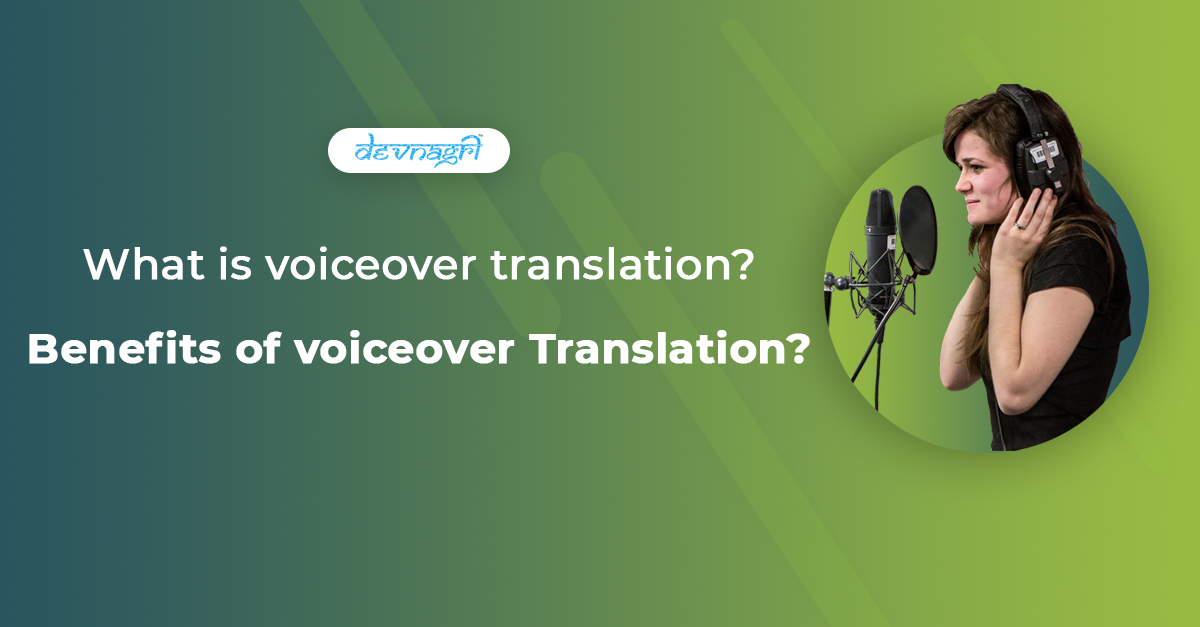
[:en]What is Voiceover Translation?
When a voiceover in one language is replaced for another one, this is referred to as voiceover translation. It is necessary to translate the originally written screenplay into a new target language, record it with voice talent, and then overlay it over the film’s original images.
It is common to use a native-speaking voice since they have an authentic accent and pronunciation and can adapt the script to the specific target market.
What Is The Benefit Of Using Voiceover Translation?
A foreign language voiceover increases the likelihood that you will establish an emotional connection with your target audience. Localization is essential for globalization and growth since it allows you to enter markets and contact individuals you would not otherwise be able to reach.
Voiceover translation boosts sales, with 55 percent of customers stating that they are more likely to purchase a product if the information is presented in their native language. It is more probable that someone will interact with material if presented in their native language, which they understand.
Types of Voiceover Translation
There are different kinds of voiceover translation that you might employ for your project, and the one you choose will generally be determined by the context of the content you are working with. You may use the following guide to assist you in making your decision:
Dubbing or lip-syncing are two terms that are used to describe the process of creating a film.
Dubbing is the process of fully replacing an original recording with a recorded translation. The new audio must be as closely synced as possible with the on-screen lip movement, and any other sounds, including yawns and sneezes, must be captured and saved.
When done correctly, it is the most efficient alternative available. Although it needs a high level of expertise from the voice talent, it may be very costly due to the high demand.
Also Read: A Helpful Guide to Choosing the Best Voice Over Translation
Voice Replacement
Voice replacement is a more straightforward form of dubbing that includes turning the volume of the original dialogue down to zero and playing the new voiceover translation over the top of that.
Even though the speech will be synchronized with the on-screen action to the greatest extent feasible, it will not be as perfectly matched as it would be with dubbing.
The UN Style
This technique is often employed for news-style reporting since it enables the original conversation to be heard in its entirety. The speaker is heard for a few seconds before the volume is reduced.
Following that, the translated speech is overlaid on top of the original soundtrack, and the original audio is completely removed.
It is used for interviews, documentaries, and news videos because it preserves the authenticity of the speaker’s natural voice while enabling it to be understood by listeners who speak a variety of languages.
The Instructional Style
Without using a script, the voice actor explains what is occurring on the screen as it is broadcast. It is possible to extract the original audio from the video, allowing the voice actor to deliver a narrative that explains the action in the target language.
When translating e-learning materials or other content that needs a simple conveyance of information rather than conveying emotion or nuance, this technique is frequently employed.
Also Read: Why Voice Over Translation Is Necessary For Growing Business?
Full Actor Translation
In certain cases, it may be feasible to utilize a green screen to fully replace the original actor with a new native speaker who speaks the same language as the original actor. It is important to note that this will only work in very particular situations and will almost certainly be a more costly choice than the ones mentioned above.
Unlike conventional subtitles or transcripts, voiceover translation may assist you in localizing your content and expanding its reach into new markets in ways that normal subtitles or transcripts cannot.
When you choose the most appropriate translation technique for your video, you can guarantee that the content, tone, and flow of the video are accurate and that nothing is lost in the process of translation. It is critical for developing your company and brand that your message is constant, and a professionally done voiceover translation will ensure that this is the case for you.[:]





